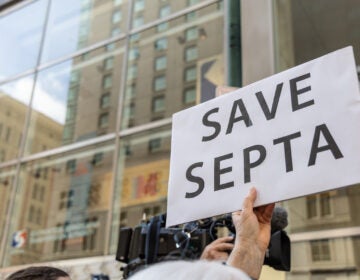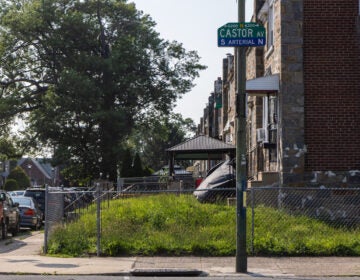SEPTA still relying on its “farebox of the future”

With SEPTA so focused on bringing its fare card system into the 21st century, most riders probably don’t realize they already swipe their TransPasses and drop their tokens into a “farebox of the future” on buses and trolleys.
And although SEPTA’s fareboxes may now seem large and clunky in an era of sleekly designed laptops and smart phones, they represent the last major effort to overhaul the authority’s fare technology and form the backbone of today’s system.
The collection set-up SEPTA set out to replace in 1990 in the so-called “farebox of the future” project was a big “dump box,” according to Sam Sulaiman, who worked as a junior engineer on the project.
Riders would place their cash, tokens or coins into the machines, and bus and trolley operators had to verify that they had paid the right amount.
Because the old fareboxes didn’t have a magnetic card reader, riders also had to flash their weekly and monthly passes as they boarded ― meaning SEPTA lost revenue because of forged passes, said John McGee, head of the authority’s current smart card project.
The new fareboxes, which were fully installed by 1995, fixed those problems. They count the money and tokens put into them and have magnetic readers that scan Trans- and TrailPasses and verify their validity. (While the latter feature may not sound revolutionary, McGee said SEPTA was one of the first transit agencies to install card readers on its surface fleet.)
The fareboxes also allow SEPTA to more effectively track ridership.
Information on how many people board buses and trains is collected by the fareboxes and is used to analyze ridership patterns and audit SEPTA’s revenue against its ridership, making it easier to tell when and where fare evasion is occurring.
While not everything about the fareboxes worked ― SEPTA dropped plans to install transfer printers on buses and trolleys because of mechanical problems with them, Sulaiman said ― they’ve held up well over the years.
Despite being 15 years old, the fareboxes still have some future ahead of them as the workhorses of SEPTA’s new smart card system. Rather than replacing them with new equipment, McGee said SEPTA finished an upgrade a few weeks ago that will allow them to collect fares when the smart card is rolled out ― saving the authority money and removing some uncertainty about the project.
The fareboxes just need a swipeless card reader attached to them to handle the new system.
Yet in an ironic twist for the smart card procurement, Cubic, one of the companies trying to win the right to build the new system, was also one of two companies that vied for the farebox of the future contract.
When it lost to competitor GFI-Genfare, it sued SEPTA, accusing the authority of failing to pay it for work it did during a trial period of its farebox system, according to court documents.
Cubic also said SEPTA unfairly awarding the contract to Genfare by not objectively rating its farebox against its competitor’s model.
The suit was eventually settled out of court for an unspecified amount.
SEPTA officials have expressed concern in the past that the current $100 million smart card contract could be tied up in litigation, a common outcome of large government procurements.
“You frequently have vendors who do not receive the contract that from a distance appear to act as spoilers,” McGee said, adding that such lawsuits attempt to “tie up the competitor’s ability to make a profit” on the contract it just won.
While SEPTA can’t stop the losers of the current contract from filing suit, it’s been careful, he said, to reduce its legal risk by providing a level playing field for the bidders and sharing information equally among them.
Besides Cubic, Affiliated Computer Services and Scheidt & Bachmann are vying for the contract, according to records obtained from SEPTA.
Contact the reporter at acampisi@planphilly.com
WHYY is your source for fact-based, in-depth journalism and information. As a nonprofit organization, we rely on financial support from readers like you. Please give today.






